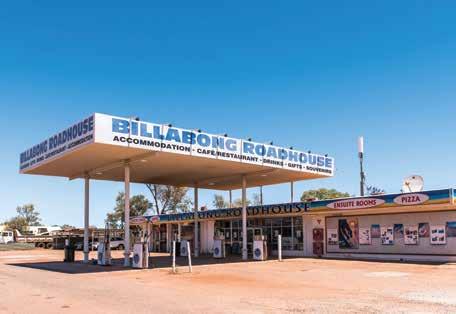
3 minute read
WA Transport History
The History of the West Australian Road Transport Industry
1962
Advertisement
THE ASSOCIATION staged its first General Committee Meeting in the new Wellington Street premises on March 8, 1962. Committeemen donated chairs at £13 10s each, as did an oil company and the Olympic Tyre and Rubber Company. A special ta ble had previously been bought. School bus operators were advised that because of the British Empire and Commonwealth Games in November, that the normal school year would consist of 202 days instead of 204. However, the Education Department was willing to pay for the two days, less running costs and dead running costs.
Association Secretary J R Secombe retired on June 30 after a career that started on May 15, 1943. Association President J A S Warwick said he “valued very highly the sage counsel and secretarial ability displayed by Mr Secombe over the years of his service. Because of this, Mr Secombe is now engaged in an advisory and special projects capacity by the West Australian Road Transport Association”. His successor is Mr W R Pellew, who had previous association with transport and was appointed Secretary on July 1.
The original and historic Billabong Roadhouse established 1962 on the North West Coastal Highway

A Parcel Carriers’ Section was formed on May 24 with Mr R Sojan named Chairman. The inaugural Vice-Chairman is Mr E Gitsham with the committee comprising Messrs D Snowball, F Lafferty and B Grierson.
The Primary Producers’ Section was officially disbanded on July 24 after only one member, Mr Farrell, attended the Annual General Meeting.
Taxes on petroleum products yielded the Commonwealth £64.3 million in 1960- 61, equal to £6 for every person in Australia. A move to have the Association become a non-profit organisation gained a foot during the year, but at the August 14 General Committee Meeting it was decided to put this in abeyance, noting that the Victorian Road Transport Association was in the same position. This had been brought up as the Association had been slugged a £440 taxation demand for commission received from member policies with Federation Insurance Ltd.
The Crane and Forklift Section had talks with the Police Traffic Department to standardise times when cranes or more than 31 feet could use the roads. By Russell McKinnon
Mr Leonard Fletcher stood down as a committeeman of 20 years, including 10 as Treasurer. He started a horse-andcart business in 1919, expanded to two carts with the services of his brother and traded as Fletcher’s Delivery Service. In 1935, it changed to Fletcher’s Transport Company. In 43 years in the transport industry he collected two fines — both about 1929 — one for speeding on the highway at an incredible 23mph and the other for overloading. At the next quarterly meeting he was presented with a briefcase containing personal toilet requirements, “both of which will be used by Mr Fletcher during his proposed overseas holiday”. The Air Beef scheme, started in 1949, came to an end this year as the Government withdrew subsidies, stating the scheme only benefitted a limited number of pastoralists. Its fate was sealed when the Government embarked on an ambitious programme to build roads into the Kimberley suitable for carrying big stock-carrying vehicles. One cattle train, it soon proved, could service 50 percent more beasts in a season than airlifting at a fraction of the cost.
Permits were granted for the first time to cart wool by road from the Esperance area to sale yards in Albany. This was instead of sending the wool by rail via Kalgoorlie and beyond.
During the year, more than 250 school bus contractors transported 21,000 children to and from school each day in 639 vehicles at a total cost exceeding £1million. Inter-State semi-trailers are becoming a regular sight in WA. During the year ended December 31, 1961 3780 trucks made the journey from Eastern States capitals to Perth. They carried 52,920 tons — an average of 10 trucks per day with an average load of 14 tons. The return trip had an imbalance with the trucks taking only 17,640 tons back, meaning 10 trucks left daily with an average load of only 4.8 tons.










